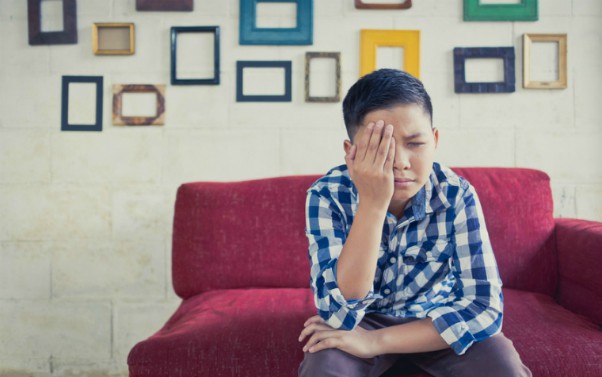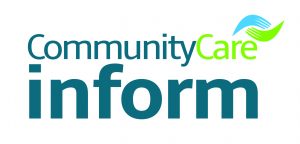
 This article comprises of excerpts taken from a guide to child trafficking legislation, policy and guidance on Community Care Inform Children. The guide is written by Swati Pande, team manager of NSPCC’s Child Trafficking Advice Centre. Inform Children subscribers can find the guides as well as other resources on the child trafficking knowledge and practice hub.
This article comprises of excerpts taken from a guide to child trafficking legislation, policy and guidance on Community Care Inform Children. The guide is written by Swati Pande, team manager of NSPCC’s Child Trafficking Advice Centre. Inform Children subscribers can find the guides as well as other resources on the child trafficking knowledge and practice hub.What’s the difference between child trafficking and child smuggling?
Child trafficking is a crime against a person, and child smuggling is a crime against the state. Human trafficking victims are tricked, forced, threatened or otherwise coerced into moving to a situation in which they are then exploited for labour, sexual acts, domestic services, identity abuse, removal of organs or other criminal acts. This movement can be between countries or within their own country.
People smuggling is a business transaction between a person wishing to enter a country illegally and their facilitator. Once the service has been rendered, the transaction is complete. People smuggling always involves illegal border crossing and entry into another country.
In practice, especially when dealing with vulnerable children who have been moved from their country of origin, it is best to understand smuggling and trafficking as a spectrum. A child may begin their journey thinking they are being smuggled but end up being exploited. It is therefore important to assess each case carefully, and identify the protective and risk factors in each child’s life to ensure they are adequately protected.
Definition of child trafficking
The Protocol to prevent, suppress and punish trafficking in persons, especially women and children, supplementing the United Nations Convention Against Transnational Organized Crime (also known as the Palermo Protocol) is the internationally accepted definition of human trafficking. It was ratified by the UK on 6 February 2006.
Article 3 of the Palermo Protocol (2000) defines trafficking as follows:
(a)“Trafficking of persons” shall mean the recruitment, transportation, transfer, harbouring or receipt of persons, by means of the threat or use of force or other forms of coercion, of abduction, of fraud, of deception, of the abuse of power or of a position of vulnerability or of the giving or receiving of payments or benefits to achieve the consent of a person having control over another person, for the purpose of exploitation. Exploitation shall include, at a minimum, the exploitation of the prostitution of others or other forms of sexual exploitation, forced labour or services, slavery or practices similar to slavery, servitude or the removal of organs;
(b) The consent of a victim of trafficking in persons to the intended exploitation set forth in sub-paragraph (a) of this article shall be irrelevant where any of the means set forth in subparagraph (a) have been used;
(c) The recruitment, transportation, transfer, harbouring or receipt of a child for the purpose of exploitation shall be considered “trafficking in persons” even if this does not involve any of the means set forth in sub-paragraph (a) of this article;
(d) “Child” shall mean any person under eighteen years of age.
This definition is used in government guidance on Safeguarding children who may have been trafficked. Child trafficking is a form of slavery that often involves immigration and criminal offences.
What do we know about victims of child trafficking?
Research provides some insights into the modes and characteristics of trafficking from different countries of origin, as well as the destinations of children and the situations they find themselves in.
The trafficking of African children tends to be more opportunistic, perpetrated by one or a small number of individuals, compared to the structured and organised criminal networks that traffic Vietnamese and Chinese children. Whereas the latter employ covert techniques such as clandestine entry and circuitous routes with agents avoiding UK border controls, West African traffickers often accompany children at border control having flown directly to the UK with the victim, who has adopted an identity of a family member of the trafficker (CEOP, 2010).
The UK Human Trafficking Centre, in its baseline assessment report, found that the number of potential victims trafficked for cannabis cultivation increased by 130% from 2011 to 2012. Evidence shows that the most prevalent form of child trafficking in the UK is for forced labour in cannabis cultivation and data from the NRM consistently shows that Vietnam is the single largest source country for child victims of trafficking, (Brotherton, 2014).
Research also highlights other communities where trafficking is prevalent. Between September 2007 and the 31 July 2015 the NSPCC Child Trafficking Advice Centre received 1,281 referrals for cases involving foreign national children. Of these, 137 were Romanian nationals. It is acknowledged that, like other ethnic minorities across world, children from the Roma ethnic minority have specific vulnerabilities, may face discrimination and abusive adults may use ‘culture’ to justify abuse (Hurley, John-Baptiste and Pande, 2015).
Further reading
References
Brotherton V (2014), Victim or Criminal? Trafficking for Forced Criminal Exploitation in Europe
CEOP (2010), Strategic threat assessment child trafficking in the UK
Hurley B, John-Baptiste M and Pande S (2015), Free to Move, Invisible to Care


 Assistive technology and dementia: practice tips
Assistive technology and dementia: practice tips  A trauma-informed approach to social work: practice tips
A trauma-informed approach to social work: practice tips 




 Find out how to develop your emotional resilience with our free downloadable guide
Find out how to develop your emotional resilience with our free downloadable guide  Develop your social work career with Community Care’s Careers and Training Guide
Develop your social work career with Community Care’s Careers and Training Guide  ‘Dear Sajid Javid: please end the inappropriate detention of autistic people and those with learning disabilities’
‘Dear Sajid Javid: please end the inappropriate detention of autistic people and those with learning disabilities’ Ofsted calls for power to scrutinise children’s home groups
Ofsted calls for power to scrutinise children’s home groups Seven in eight commissioners paying below ‘minimum rate for home care’
Seven in eight commissioners paying below ‘minimum rate for home care’
 Facebook
Facebook X
X LinkedIn
LinkedIn Instagram
Instagram
Comments are closed.